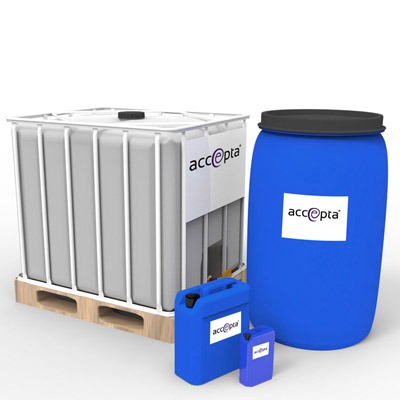Recognizing the Relevance of Foam Control in Food and Drink Processing
Recognizing the Relevance of Foam Control in Food and Drink Processing
Blog Article
Effective Methods for Achieving Optimum Foam Control in Chemical Manufacturing
Reliable foam control is an essential facet of chemical production that can considerably affect manufacturing efficiency and item high quality. By comprehending the mechanisms of foam formation and selecting suitable anti-foaming representatives, manufacturers can take aggressive steps to minimize excessive foam.
Recognizing Foam Formation

Surfactants, or surface-active agents, lower the surface area tension of the fluid, promoting bubble stability and advertising foam generation. Furthermore, agitation or mixing procedures can enhance bubble formation, often aggravating foam issues. The characteristics of the fluid medium, consisting of viscosity and thickness, additional influence foam behavior; for example, more thick liquids often tend to catch air more successfully, resulting in enhanced foam stability.
Recognizing these essential facets of foam formation is essential for reliable foam control in chemical production. By acknowledging the conditions that promote foam advancement, producers can apply targeted methods to reduce its negative effects, therefore optimizing production processes and ensuring constant item top quality. This foundational expertise is important prior to checking out details methods for regulating foam in commercial setups.
Choice of Anti-Foaming Representatives
When choosing anti-foaming representatives, it is vital to consider the certain characteristics of the chemical process and the kind of foam being created (Foam Control). Various aspects influence the performance of an anti-foaming agent, including its chemical structure, temperature stability, and compatibility with various other procedure materials
Silicone-based anti-foams are commonly utilized as a result of their high performance and broad temperature level variety. They work by reducing surface area tension, enabling the foam bubbles to coalesce and damage even more conveniently. However, they may not appropriate for all applications, especially those involving sensitive formulations where silicone contamination is an issue.
On the various other hand, non-silicone agents, such as mineral oils or organic substances, can be beneficial in details situations, specifically when silicone residues are unfavorable. These representatives have a tendency to be much less reliable at higher temperatures but can provide reliable foam control in various other conditions.
Furthermore, comprehending the foam's beginning-- whether it arises from oygenation, agitation, or chemical reactions-- overviews the choice procedure. Checking under actual operating conditions is critical to ensure that the chosen anti-foaming agent meets the distinct demands of the chemical manufacturing process efficiently.
Refine Optimization Techniques
Effective foam control is a crucial facet of optimizing chemical manufacturing processes. By fine-tuning these criteria, operators can decrease disturbance, thus lessening foam development during mixing.
Additionally, regulating temperature level and pressure within the system can substantially influence foam generation. Decreasing the temperature may reduce the volatility of specific components, bring about reduced foam. Maintaining ideal stress degrees helps in reducing too much gas release, which contributes to foam stability.
One more reliable strategy is the strategic enhancement of anti-foaming representatives at critical points of the process. Mindful timing and dosage can make certain that these representatives successfully subdue foam without disrupting various other procedure specifications.
In addition, including a methodical assessment of raw material homes can assist determine inherently frothing substances, enabling preemptive steps. Performing routine audits and procedure evaluations can reveal inadequacies and locations for improvement, enabling continual optimization of foam control strategies.
Monitoring and Control Systems
Monitoring and control systems play a vital role in maintaining optimal foam management throughout the chemical manufacturing process. These systems are crucial for real-time observation and modification of foam levels, guaranteeing that production efficiency is taken full advantage of while decreasing disruptions caused by excessive foam development.
Advanced sensors and instrumentation are utilized to spot foam density Full Article and height, offering critical data that informs control algorithms. This data-driven strategy permits the prompt application of antifoaming representatives, ensuring that foam levels continue to be within acceptable limits. By integrating tracking systems with procedure control software, manufacturers can implement automatic feedbacks to foam fluctuations, reducing the need for hand-operated treatment and enhancing operational consistency.
Furthermore, the combination of artificial intelligence and anticipating analytics into checking systems can help with proactive foam management. By examining historical foam data and operational criteria, these systems can anticipate foam generation patterns and recommend preemptive steps. Regular calibration and upkeep of surveillance equipment are necessary to make sure accuracy and reliability in foam discovery.
Eventually, efficient surveillance and control systems are important for enhancing foam control, promoting security, and improving overall productivity in chemical manufacturing settings.

Study and Finest Practices
Real-world applications of tracking and control systems highlight the significance of foam administration in chemical production. A notable instance research includes a large-scale pharmaceutical producer that executed an automated foam discovery system.
An additional exemplary situation comes from a petrochemical business that took on a combination of antifoam representatives and process optimization methods. By evaluating foam generation patterns, the company customized its antifoam dose, causing a 25% decrease in chemical use and substantial price savings. This targeted approach not just decreased foam disturbance but additionally improved the total stability of the production procedure.

Conclusion
Finally, accomplishing ideal foam control in chemical production necessitates a comprehensive approach incorporating the choice of suitable anti-foaming agents, implementation of process optimization methods, and the combination of innovative surveillance systems. Regular audits and training even more improve the effectiveness of these approaches, fostering a culture of continuous renovation. By dealing with foam development proactively, suppliers can significantly enhance production efficiency and product pop over to this web-site quality, inevitably adding to even more sustainable and affordable procedures.
By comprehending the devices of foam formation and picking suitable anti-foaming representatives, producers can take aggressive procedures to reduce too much foam. The qualities of the liquid medium, including thickness and density, additional influence foam habits; for example, even more thick liquids tend to catch air a lot more effectively, leading to boosted foam security.
Understanding these essential aspects of foam formation is vital for effective foam control in about his chemical manufacturing. By evaluating historical foam information and functional parameters, these systems can forecast foam generation patterns and recommend preemptive steps. Foam Control. Routine audits of foam control determines make certain that procedures remain optimized, while fostering a culture of aggressive foam management can lead to sustainable enhancements across the manufacturing spectrum
Report this page